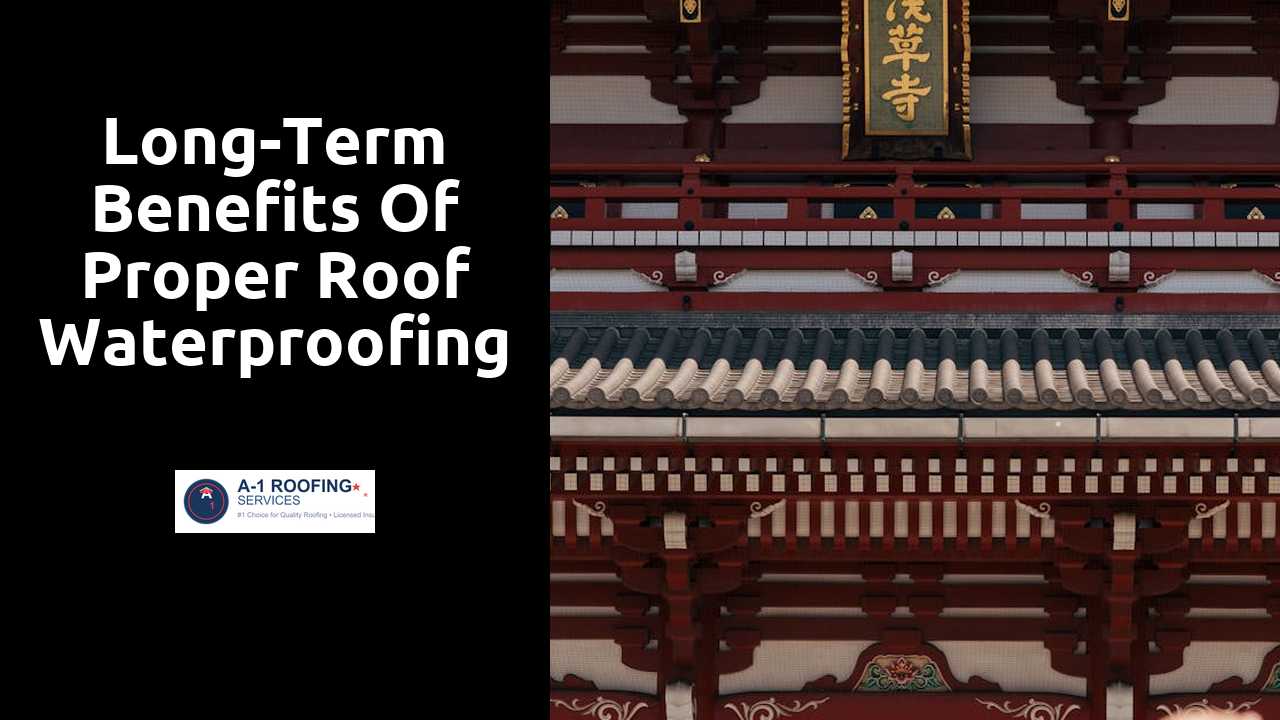
Long-Term Benefits of Proper Roof Waterproofing
Table Of Contents
Impact on Property Value
A well-maintained, waterproof roof significantly enhances a property's overall value. Prospective buyers often view properties with reliable waterproofing as more desirable. This leads to a stronger market presence and can even justify a higher sale price. A solid roof also conveys the message that the property has been cared for, which can positively influence buyer perceptions and decisions.
Investing in proper waterproofing can yield substantial returns in the long run. Home inspections frequently focus on roofing conditions; thus, ensuring a roof is effectively waterproofed can prevent negotiations that could lower the property's offer price. Additionally, properties that demonstrate functionality and durability tend to command better listings and attract buyers more readily, resulting in an advantageous sale experience for homeowners.
Navigate to this website to learn more.
Increasing Home Appeal to Buyers
A well-maintained roof significantly enhances a home’s aesthetic and structural integrity, making it more attractive to potential buyers. A visually appealing roof suggests meticulous care and attention to detail, which resonates with buyers seeking a turn-key property. This appeal is further augmented when the roof is free from leaks and obvious wear, instilling confidence in the quality of the home.
Buyers are increasingly aware of the long-term costs associated with homeownership, particularly concerning maintenance. A properly waterproofed roof assures them that they won’t face costly repairs in the near future. This perceived value encourages buyers to see the property as a sound investment, elevating its position in a competitive real estate market.
Health Benefits of Waterproofing
Proper roof waterproofing plays a crucial role in maintaining a healthy indoor environment. When roofs are adequately sealed and protected from leaks, the risk of moisture intrusion diminishes significantly. High humidity levels and dampness are breeding grounds for harmful microorganisms. By preventing water penetration, homeowners can reduce the likelihood of respiratory issues and allergic reactions caused by mold and mildew.
The presence of mold not only poses health risks but also contributes to structural damage over time. Effective waterproofing helps to mitigate these risks by keeping the building dry and promoting good air quality. Investing in sound waterproofing measures leads to a safer living space. Homeowners can ensure that their families are shielded from the adverse health impacts typically associated with water intrusion.
Preventing Mold and Mildew Growth
Mold and mildew thrive in damp environments, making proper waterproofing essential for maintaining a healthy indoor atmosphere. By effectively sealing the roof and preventing water intrusion, homeowners can significantly reduce the likelihood of these fungi developing. This is particularly important in areas with high humidity, where inadequate protection can quickly lead to infestations that compromise air quality and structural integrity.
Addressing moisture issues proactively not only safeguards living spaces but also protects personal belongings from damage caused by mold. The costs associated with remediation and repairs can escalate quickly if left unchecked. A well-implemented waterproofing system offers peace of mind, fostering a safer environment and preserving the overall condition of the property.
Environmental Considerations
The choice of waterproofing materials can have a significant impact on the environment. Traditional waterproofing options may contain harmful chemicals that can leach into the soil and waterways. By opting for environmentally-friendly alternatives, homeowners can reduce their ecological footprint and contribute to a healthier planet. Many sustainable options, such as natural rubber or bio-based sealants, provide effective waterproofing while minimizing adverse effects on the environment.
In addition to selecting eco-friendly materials, proper roof waterproofing techniques can promote better energy efficiency. A well-waterproofed roof helps maintain indoor temperatures, reducing the need for excessive heating or cooling. This leads to lower energy consumption and decreased greenhouse gas emissions. Homeowners who prioritize sustainable practices in their waterproofing efforts not only protect their properties but also play a role in creating a more sustainable future.
Sustainable Waterproofing Practices
Incorporating sustainable materials into waterproofing solutions can significantly reduce environmental impact. Many modern waterproofing products utilize eco-friendly substances that minimize harmful chemicals. These materials not only protect roofs effectively but also help maintain air quality. Using traditional petroleum-based products could contribute to pollution and environmental degradation. Sustainable alternatives are designed to perform efficiently without compromising safety or effectiveness.
Implementing efficient application techniques is another essential aspect of sustainable practices. Proper application reduces material waste and ensures that resources are used judiciously. Employing techniques such as thermal imaging can help identify vulnerable areas before installation. This proactive approach mitigates the risk of leaks and other long-term issues. Ultimately, choosing sustainable waterproofing practices enhances the durability of roofs while promoting a healthier planet.
Related Links
Innovative Waterproofing Technologies for Modern RoofsStep-by-Step Guide to Applying Waterproof Coatings